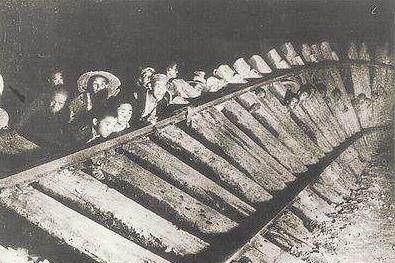History is grim. History is not a little girl to dress up. - Gu Hua
During the War of Resistance Against Japanese Aggression, guerrilla warfare brought great harm to the Japanese army and the Nationalist army, and often when you were tired and dying, the Eighth Route Army killed you in front of your eyes, and when you gathered a good team to kill them, they ran away again.

During the War of Resistance Against Japan, there was another tactic that also caused great casualties to the Japanese army, that is, traffic breakage.
This tactic is to adopt the active offensive method of dot line, divide the troops and masses participating in the battle into road breaking teams, cover teams, and reserve teams, and break the road first and then attack, so that the enemy cannot support at the first time and destroy the enemy's living forces.
The railway guerrillas we often see in TV and movies are using this tactic, the long railway line, may not be able to blow up anywhere, the Japanese army is even more invincible.
The Eighth Route Army was also helpless to adopt this tactic, when the Japanese army, in order to better attack the base areas, achieved the purpose of dividing the base areas by controlling the lines of communication, so as to eliminate them one by one. Therefore, in order to break through the blockade, the Eighth Route Army launched a traffic breaker operation.
In order to destroy the strategic purpose of the Japanese army, from the winter of 1939 to June 1940 in the Jinji-Hebei-Yu base area, four breakout battles were carried out successively on the Handan-Chang Highway, the Pinghan Railway, the Baijin-Jin Railway, and the Wusha Highway.
It also made a good start to the Hundred Regiments War launched in August. The central task of the Hundred Regiments War was the traffic breaker battle, the main target of which was the 231-kilometer Zhengtai Railway across the Taihang Mountains.
The biggest difficulty in the traffic break-through battle lies in the thorough preparations in the early stage and the cooperation between the military and the people, and a little bit of information is leaked, and what awaits our army is the enemy's large troops. What makes the Japanese army even more headache is that it cannot be prevented, and on a railway line, which section may be attacked, and there is no way to vomit blood.